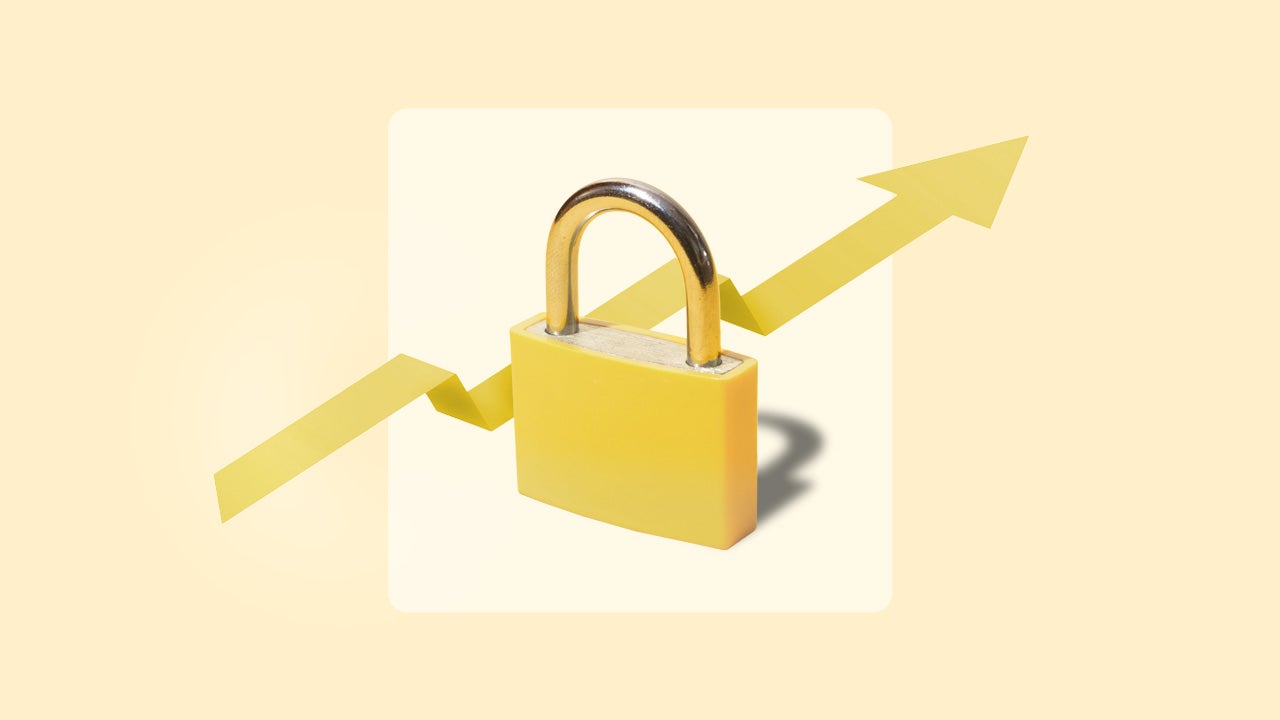If you’ve ever had a gut-punch moment checking your 401(k) after a rough trading week, you’re not alone.
During turbulent times, the idea of “safe haven” assets is appealing. These investments, by design, generally hold their value — or even gain ground — when broader markets decline.
Of course, no asset is completely risk-free. But certain conservative strategies can help stabilize your portfolio and limit damage during downturns.
We asked several financial advisors to share their go-to safe haven assets — options that provide security, liquidity or inflation protection when it matters most.
Here’s what they had to say.
What safe haven assets should I consider for my portfolio?
High-quality short-duration bonds
Short-duration bonds aren’t sexy. But they’re one of the best low-risk investments out there — and when stocks are chaotic, that means everything.
“High-quality bonds with a maturity of less than two years provide stability and income without exposing you to the full force of interest rate risk,” says Nate Baim, a certified financial planner and founding member of Pursuit Planning and Investments.
Translation? You’re getting paid a reasonable return, you’re not locking your money up for a decade, and you’re not risking big swings if interest rates move. That matters, especially if you’re in or near retirement — or simply want assurance that part of your portfolio won’t tank after the next market-moving event.
High-quality, short-term bonds are boring in the best possible way. They don’t surge when stocks do, but they don’t crash, either. In volatile markets, predictability is king.
Cash in a high-yield savings account (HYSA)
You might think cash is dead weight in your portfolio. But in today’s interest rate environment, it’s earning its keep.
Joe Conroy, certified financial planner and owner of Harford Retirement Planners, leans into cash for near-term needs.
“For anything like a pending tax bill or home down payment within a year, we like high-yield savings accounts,” says Conroy.
Online banks offer the best high-yield savings account rates, and your money is only a click and three business days away. Most experts recommend keeping at least three to six months’ worth of expenses in a savings account for emergencies. You might as well earn a little interest on that money while you’re at it.
Cash gives you flexibility. You’re not chasing returns — you’re preserving capital. It’s the money you might need in the next six to 12 months, and it has to be available no matter what the stock market is doing. That’s why high-yield savings accounts are one of the top short-term investments around.
“It’s a straightforward first stop,” says Baim. “High-yield savings accounts won’t make you rich, but they’ll help you sleep at night.”
In volatile markets, that peace of mind is priceless.
Need an advisor?
Need expert guidance when it comes to managing your investments or planning for retirement?
Bankrate’s AdvisorMatch can connect you to a CFP® professional to help you achieve your financial goals.
TIPS (Treasury Inflation-Protected Securities)
When inflation spikes, cash and standard bonds can lose purchasing power fast. That’s why several financial advisors recommend adding TIPS (Treasury Inflation-Protected Securities) to your portfolio.
TIPS are designed to preserve the value of your money over time by adjusting their principal based on changes in the consumer price index (CPI). So, while regular bonds might lose ground as costs rise, TIPS keep up.
“TIPS can be useful for some investors, particularly given the current fiscal environment,” Baim says. “Persistent deficit spending and the possibility of surprise inflation make TIPS an attractive candidate.”
TIPS won’t make you rich, but they’ll keep you from falling behind, especially in a high-inflation scenario.
Treasury bills
Another ultra-safe asset from the U.S. Treasury is T-bills. They’re backed by the U.S. government, pay a competitive yield and are a simple, low-risk place to park cash.
“Treasury bills are hard to beat for short-term cash management,” says Craig Toberman, a certified financial planner and partner at Toberman Becker Wealth. “They offer liquidity, they’re exempt from state income taxes, and they avoid penalties or surrender charges common with other products.”
While buying T-bills directly through a brokerage or retirement plan is an extra step compared to keeping cash in a bank account, Toberman thinks it’s worth it.
“The process is straightforward once it’s set up,” he says. “For many investors, it’s a small effort that can lead to better outcomes and more control.”
International stocks
It might seem counterintuitive to mention stocks — let alone international stocks — when discussing safe havens. But diversification is key to reducing risk in your portfolio.
“Global diversification isn’t exotic, it’s prudent,” says Baim. “One recurring issue I see is portfolios heavily concentrated in U.S. large-cap stocks. That’s a home-country bias at work.”
Markets don’t move in lockstep. U.S. stocks might be down while international markets hold steady — or outperform. A globally diversified equity allocation can help reduce volatility and soften the blow during domestic downturns.
And remember, not all international exposure is high-risk. Developed markets like Europe and Japan have stable economies and central banks that behave more predictably than emerging markets.
International stocks aren’t a replacement for cash or bonds — but in a diversified portfolio, they’re an essential ingredient.
3 things to keep in mind about safe haven assets
Not all safe haven assets work the same for every investor. To get the protection you’re seeking, you need to think about how these investments fit into your bigger plan based on your goals, time horizon and risk tolerance.
1. It depends on your time horizon
Not all “safe” assets are safe for you. What’s conservative in one situation can be risky in another.
“If you need funds in six to 12 months for a home purchase, then having that money readily available is key,” says Kevin Feig, certified financial planner and owner of Walk You To Wealth.
“On the other hand, if you need the funds in 10–12 years, then the previous list of safe assets are some of your riskiest options because they likely won’t keep pace with inflation over the long term,” he added.
If you need the money soon, focus on liquidity and capital preservation — think HYSAs, T-bills and money market funds. But if you’re investing for the next decade, that’s when it makes sense to consider stocks and stock market index funds.
A long time horizon gives you more flexibility. It gives you more room to take risks and recover from potential losses. Stocks, while risky in the short term, historically outperform most other assets in the long term. Match your strategy to your runway.
2. Figure out the role safe haven assets play in your portfolio
Don’t simply add conservative investments to your 401(k) or IRA and call it a day. Safe haven assets are meant to serve a purpose — and you need to know what that is. You also need to consider what percentage of your portfolio to allocate to these assets.
“We review how much money the client needs from the portfolio in an average year in retirement and multiply that by five,” says Conroy. “That’s the number we want to keep in non-stock conservative asset classes.”
That five-year cushion gives you the breathing room to let riskier assets recover. Stocks can go down but usually bounce back in a couple of years or less.
“The goal is to avoid a situation where we’re forced to sell stocks at low prices,” says Conroy. “We live on the conservative assets while we wait for stocks to recover.”
In short: Safe haven assets are your financial Plan B. So it’s equally important to understand your Plan A well before the S&P 500 drops 20 percent. Working with a financial advisor to devise a plan ahead of time is a smart move.
“The average investor wants to get conservative after the market drops, and wants to get aggressive after the market is hitting all-time-highs,” says Conroy. “What you want to do is create a plan for volatility before the inevitable market drops.”
3. Beware of buffer ETFs
Buffer ETFs promise downside protection with some upside potential. But like anything that sounds too good to be true — it probably is.
“These products involve multiple variables, and if not thoroughly understood or appropriately implemented, they may lead to outcomes that differ from investor expectations,” says Baim.
It’s not that buffer ETFs are all bad. But they’re not a plug-and-play way to add safety to your portfolio. If you don’t understand how the cap, buffer and duration interact, you might be exposing yourself to risks you didn’t expect.
“Because of their complexity, I approach these strategies cautiously,” says Baim. “I’m particularly cautious when evaluating buffer ETFs for capital preservation or liquidity-focused roles in a portfolio.”
If your goal is protection and simplicity, stick with other assets first. You can get fancy later, once your core plan is built out.
Bottom line
Safe haven assets are the shock absorbers in your portfolio. They don’t eliminate risk, but they spread it out, soften the blow or preserve your capital.
They’re not flashy, but that’s the point. High-yield savings accounts, short-term bonds, T-bills — these are the steady options that help you ride out the chaos without locking in losses. Boring? Sure. But when the stock market feels like a roller coaster, you’ll appreciate some solid ground to stand on.
Editorial Disclaimer: All investors are advised to conduct their own independent research into investment strategies before making an investment decision. In addition, investors are advised that past investment product performance is no guarantee of future price appreciation.
Read the full article here
















